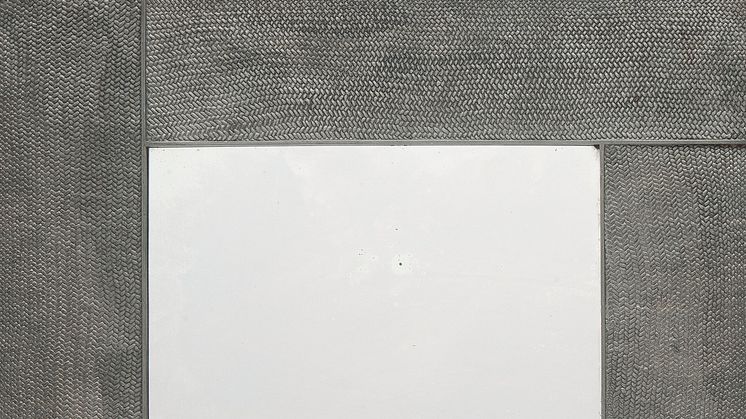
Press release -
New acquisition: Mirror with panama pattern by Björn Trägårdh
Nationalmuseum
has acquired a pewter-framed mirror designed by Björn Trägårdh in the 1930s
when he was employed as a designer at Svenskt Tenn. The absence of any stamps
indicates that the piece may be a prototype that never entered production.
Nationalmuseum has added a pewter-framed mirror to its applied art collection. The square frame features a relief panama pattern, a form of decoration traditionally attributed to Estrid Ericson, the creator and original owner of the Svenskt Tenn pewter business. According to company folklore, Estrid Ericson was inspired by her husband’s panama hat and used the pattern on a variety of pewter artifacts.
The mirror acquired by Nationalmuseum is unsigned and does not bear any stamps. It belonged to the artist and designer Björn Trägårdh (1908–98) and, according to his family, was designed by him in the 1930s. Svenskt Tenn, founded in 1924, hired Trägårdh at a very young age in 1927, and he remained with the company until 1934. He primarily designed furniture and pewter artifacts in an elegant functionalist style. The acquired mirror may have been a prototype design for Svenskt Tenn that never went into production, hence the absence of stamps.
It is now impossible to say whether it was Estrid Ericson or Björn Trägårdh that first came up with the idea of the panama pattern. We know from other examples that Estrid Ericson often found new, unattributed applications for her designers’ creations, but the legend about her husband’s panama hat is probably untrue. The first panama-patterned pieces bearing the Svenskt Tenn stamp were manufactured as early as 1930, whereas Estrid did not marry Captain Sigfrid Ericson until 1944. In his subsequent career, however, Trägårdh continued to use a braided straw pattern on decorative buttons produced for Dior and Schiaparelli, the French fashion houses.
Nationalmuseum’s purchase of this mirror has been made possible by a generous donation from the Barbro Osher Fund. Nationalmuseum has no budget of its own for new acquisitions, but relies on gifting and financial support from private funds and foundations to enhance its collections of fine art and craft.
Further
information
Anders Bengtsson, curator applied art and modern
design, anders.bengtsson@nationalmuseum.se, +46 8 5195 4385
Hanna Tottmar, press officer, hanna.tottmar@nationalmuseum.se, +46 767 23 46 32
Caption
Björn Trägårdh, Mirror, 1930s. Photo: Anna
Danielsson/Nationalmuseum.
Categories
Nationalmuseum is Sweden’s premier museum of art and design. The collections comprise older paintings, sculpture, drawings and graphic art, and applied art and design up to the present day. The museum building is currently under renovation and scheduled to open again in 2017. In the meantime, the museum will continue its activities through collaborations, touring exhibitions and a temporary venue at the Royal Swedish Academy of Fine Arts, Fredsgatan 12, Stockholm. Nationalmuseum collaborates with Svenska Dagbladet, Fältman & Malmén and Grand Hôtel Stockholm. For more information visit www.nationalmuseum.se.

